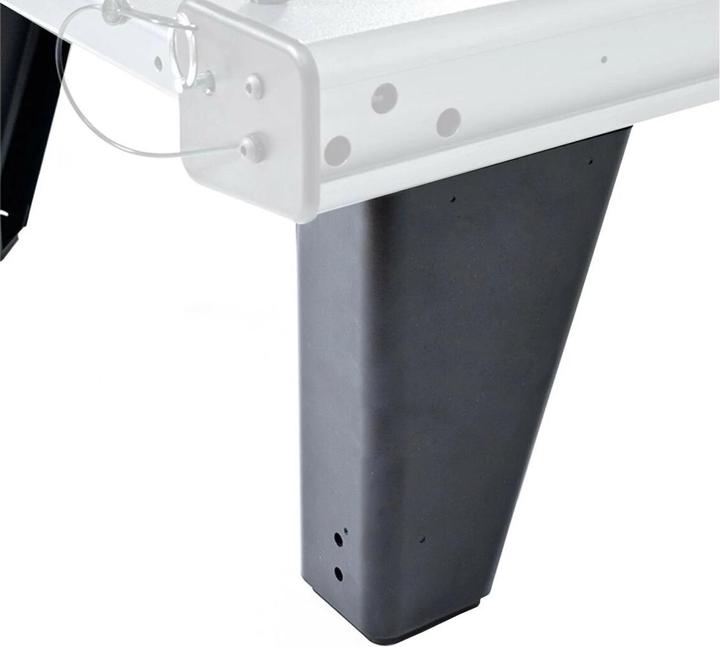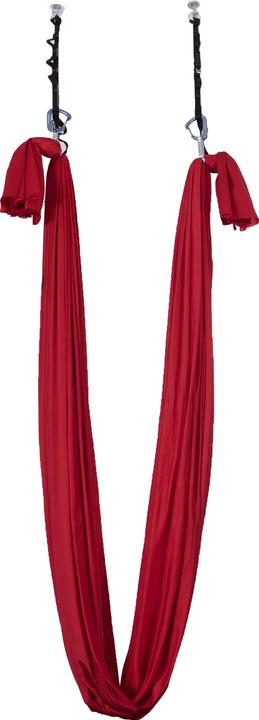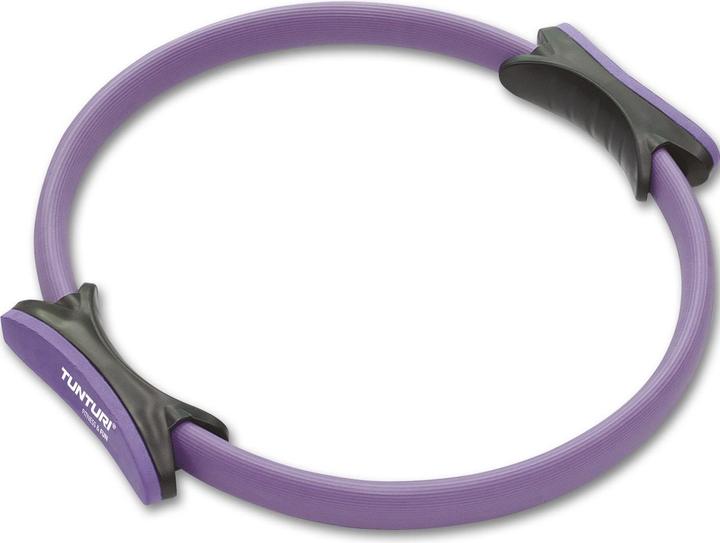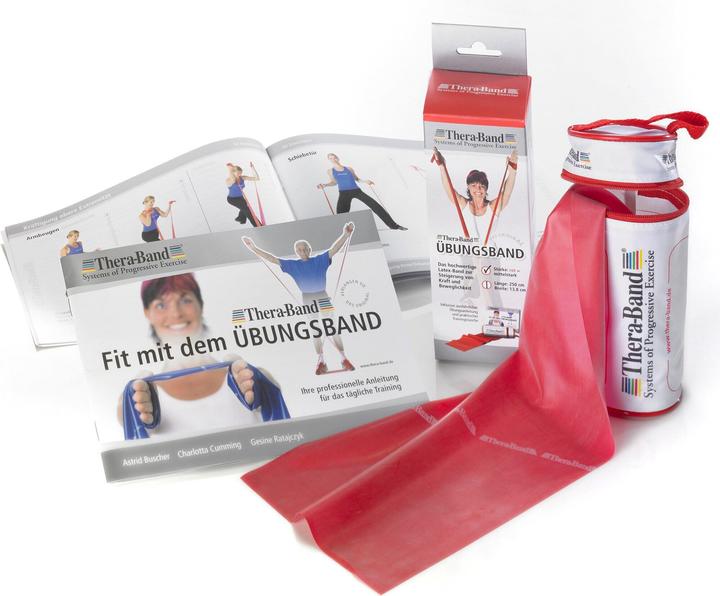

Against a wall, with a ring or simply on a mat – Pilates is effective
Following every trend definitely isn’t necessary. In the case of Pilates, however, there are plenty of reasons to do so. Here’s why this holistic workout could work wonders for you, too.
Open any social media app at any time of the day and you’re sure to see plenty of workout videos and training tips from toned fitness freaks. The hashtag #fittok has more than 61 billion views. What do you do? Save them for later. After all, you first have to convince the devil on your shoulder that working out is a good idea. You keep scrolling until… Wait, Wall Pilates? Once again, a new trendy sport has been born and is flooding the web. But why is this holistic workout, almost 100 years old, experiencing a revival? Well, toned muscles and flexibility into old age never go out of fashion. That’s a fact. Having said that, Pilates hasn’t always been where it is today. Let’s take a look at its history to see how the sport has evolved.
Originally, Pilates was designed as a system of exercises to help injured and traumatised people recover from the horrors of the First World War. The exercises Joseph Hubertus Pilates came up with were aimed at strengthening the muscles, mobilising the joints and improving breathing. Peachy butts and washboard abs weren’t his main concern.
Today, the basic idea is the same, although many different Pilates types and trends have developed over the last years and decades.
Types of Pilates
- Mat Pilates: Probably the most original type of Pilates, you do the exercises on a mat. You focus on using your own body weight to strengthen your muscles and improve your body control, alternating between standing up and lying down.

- Reformer Pilates: This method uses special equipment such as the Pilates reformer (a device with elastic springs instead of weights) to provide resistance and support during exercises. This adds variety and intensity without you running the risk of overexerting yourself.
- Aerial Pilates: Cloths or hammocks are used in this type of Pilates to perform exercises in the air. This works on flexibility, balance and core strength (the core muscles of the torso) – and looks beautiful.
- Contemporary Pilates: Classical Pilates expanded with scientific and physiotherapeutic knowledge. This type is often chosen for rehabilitation, for instance to treat restricted mobility or injuries.
- Pregnancy Pilates: This type of Pilates is specially designed to meet the needs of pregnancy. The aim is to strengthen the (pelvic floor) muscles and prepare the body for birth.
- Pilates for seniors: If you want to stay fit into old age, Pilates is a good way to work on your mobility. This type is designed for older people and is less intense.
In addition to these common types of Pilates, there are new trends such as the aforementioned Wall Pilates, which is booming on TikTok in particular. Wall Pilates incorporates a wall into the workout routine. It’s developed into a new challenge, which you’ll see in this video.
Why’s Pilates good for you? Here are the reasons
A full-body workout
Like yoga, Pilates takes a holistic approach to body fitness (but with far fewer contortions). It’s not a one-sided workout that might bore you in the long run. Instead, you train your entire body in just one session – not just your arms and upper body, or legs and butt, but almost every muscle group from head to toe. Just as the inventor of this sport, Joseph Hubertus Pilates, originally envisioned. According to his philosophy, Pilates combines physical and mental health.
Joseph Hubertus Pilates developed a method to promote the fitness and well-being of his students. It focuses on strengthening the core muscles, improving posture and promoting breathing. While yoga trains abdominal breathing, Pilates focuses more on lateral breathing.
Pilates is all about flexibility, endurance, strength and control, which is why the exercises are usually performed dynamically. In yoga, on the other hand, positions are usually held for a short period of time (except in special types of yoga). The primary goal in Pilates is a strong core, referred to as the «powerhouse». It’s the key to physical health and well-being.
Just get started: you don’t need much for Pilates
You’ll have to convince the devil on your shoulder with every new sport you take up. The great thing about Pilates is you can do it almost anywhere and without needing much equipment. In fact, all you need is sportswear and a mat. And if you like, you can add a Pilates ball, a ring, Therabands or weights to increase the intensity of the exercises.
There are plenty of simple Pilates workouts for beginners on YouTube. It’s a great way to take your first free lessons and find out if you enjoy the sport. However, if you want to get better and try out other types of Pilates, I recommend a taster session at a professional studio.
Pilates and its health benefits
On a physical level, Pilates helps to strengthen muscles, especially the core. This results in better stability and posture, which is good if you sit at a desk all day.
Pilates also has positive effects on the pelvic floor, as has been scientifically proven. The versatile exercises sustainably strengthen the pelvic muscles, particularly beneficial for women after giving birth.
In addition to exercises that specifically prepare women for pregnancy, Pilates also offers benefits for menstruation and menopause. A study showed that physiological and psychosomatic menopause symptoms can be sustainably improved by doing Pilates regularly.
Powerhouse: the effects of Pilates
Be it sleep disorders, mood swings, palpitations and dizziness, Pilates can help. This even applies to severe menstrual pain, as another study has shown. The study also emphasises the strengthening effect of Pilates on the pelvic floor.
As Pilates includes many stretching exercises, it also improves the flexibility of muscles and joints and thus promotes your general mobility and motor skills. This reduces the risk of more serious injuries in case of any accidents or falls. Back pain and muscle tension can also be treated with Pilates.
Pilates also strengthens your mental health
On a mental level, Pilates helps to reduce stress, as you can achieve a state of deep relaxation by concentrating on your breathing and movements, as studies prove. Mastering physical challenges, improving your fitness and therefore feeling better in your own body – all this boosts your self-confidence.
Header image: ShutterstockNotebook, camera, laptop or smartphone. For me, life's about taking notes – both analogue and digital. What's always on me? My iPod Shuffle. It's all in the mix, after all. This is also reflected in the topics I write about.
Interesting facts about products, behind-the-scenes looks at manufacturers and deep-dives on interesting people.
Show allThese articles might also interest you
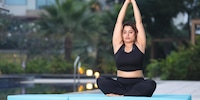
Background information
World Yoga Day: 3 preconceptions about yoga that I can no longer hear
by Anika Schulz

Background information
I did it! This is what a month of Wall Pilates did for me
by Anna Sandner

Background information
New Year’s resolutions: how to dupe the devil on your shoulder
by Maike Schuldt-Jensen
